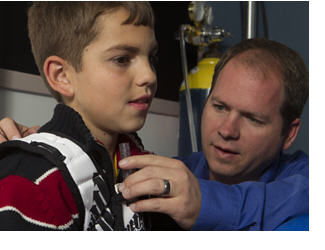 |
|---|
| Mikle South, Brigham Young University |
Autism Severity May Stem from Fear
BYU; November 29, 2012—Most people know when to be afraid and when it's ok to calm down, but new research on autism shows that children with the diagnosis struggle to let go of old, outdated fears.
Even more significantly, the Brigham Young University study found that this rigid fearfulness is linked to the severity of classic symptoms of autism, such as repeated movements and resistance to change.
For parents and others who work with children diagnosed with autism, the new research highlights the need to help children make emotional transitions—particularly when dealing with their fears.
"People with autism likely don't experience or understand their world in the same way we do," said Mikle South, a psychology professor at BYU and lead author of the study. "Since they can't change the rules in their brain, and often don't know what to expect from their environment, we need to help them plan ahead for what to expect."
In their study, South and two of his undergraduate neuroscience students—Tiffani Newton and Paul Chamberlain—recruited 30 children diagnosed with autism and 29 without to participate in an experiment. After seeing a visual cue like a yellow card, the participants would feel a harmless but surprising puff of air under their chins.
Part-way through the experiment, the conditions changed so that a different color preceded the puff of air. The researchers measured participants' skin response to see if their nervous system noticed the switch and knew what was coming.
"Typical kids learn quickly to anticipate based on the new color instead of the old one," South said. "It takes a lot longer for children with autism to learn to make the change."
The amount of time it took to extinguish the original fear correlated with the severity of hallmark symptoms of autism.
"We see a strong connection between anxiety and the repetitive behaviors," South said. "We're linking symptoms used to diagnose autism with emotion difficulties not usually considered as a classic symptom of autism."
The persistence of needless fears is detrimental to physical health. The elevated hormone levels that aid us in an actual fight or flight scenario will cause damage to the brain and the body if sustained over time.
And the families who participate in social skills groups organized by South and his students can relate to the new findings.
"In talking to parents, we hear that living with classic symptoms of autism is one thing, but dealing with their children's worries all the time is the greater challenge," South said. "It may not be an entirely separate direction to study their anxiety because it now appears to be related."
November 29, 2012
